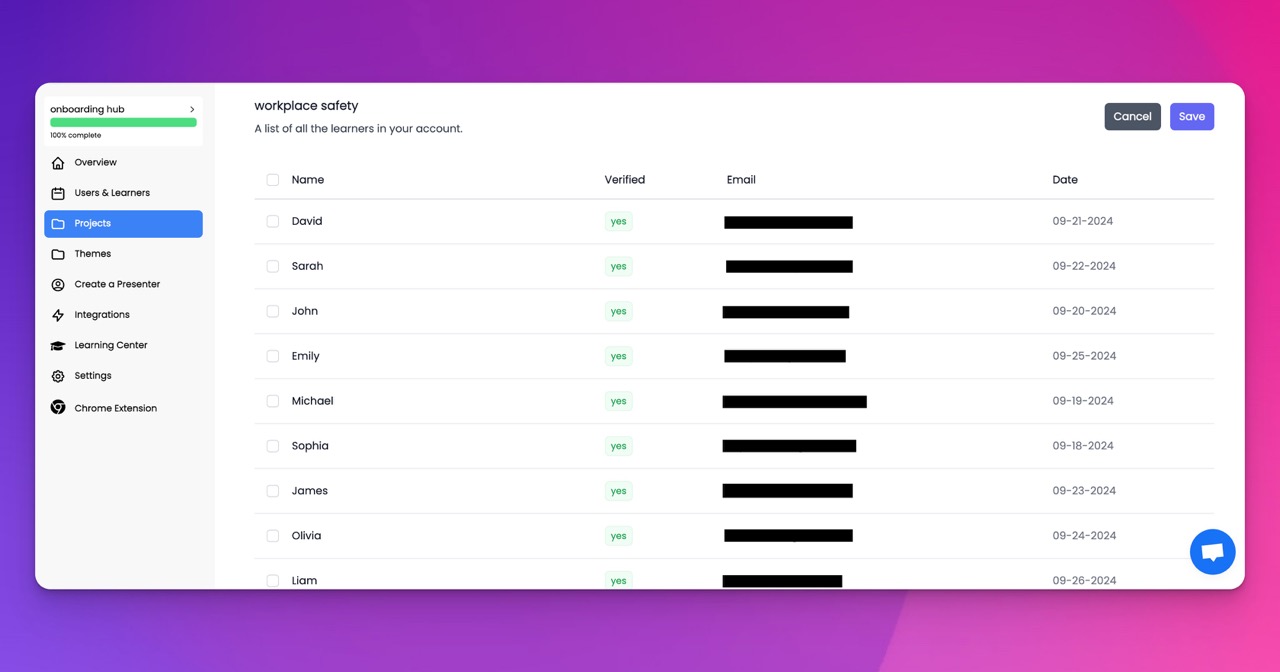🎉 Trainday now integrates with Zendesk and Hubspot 🎉 Trainday now integrates with Zendesk and Hubspot 🎉 Trainday now integrates with Zendesk and Hubspot
🎉 Trainday now integrates with Zendesk and Hubspot
🎉 Trainday now integrates with Zendesk and Hubspot
Contact
How to Create a Data-Driven Workplace Violence Prevention Plan (WVPP) for SB 553 Compliance
Workplace violence is a pressing concern, and California’s SB 553 brings it to the forefront by requiring businesses to adopt comprehensive Workplace Violence Prevention Plans (WVPPs). Whether your organization operates in healthcare, retail, construction, or another industry, compliance with SB 553 is crucial—not only to meet regulatory standards but also to protect employees and foster a safer work environment.
A data-driven approach is the key to creating an effective WVPP. By leveraging insights from past incidents, employee feedback, and industry trends, businesses can build proactive, impactful plans. At Trainday, we specialize in turning data into actionable strategies, helping organizations stay compliant and improve workplace safety.
Understanding SB 553 and Its Requirements
SB 553, signed into law in California, mandates that employers take specific steps to prevent workplace violence. Key requirements include:
Risk Assessments: Regularly identifying and addressing potential workplace violence hazards.
Training and Education: Providing employees with the tools and knowledge to recognize and respond to risks.
Incident Reporting and Investigation: Establishing systems to report and analyze incidents of workplace violence.
Implementation of Controls: Adopting engineering and administrative measures to mitigate identified risks.
Compliance is not only about avoiding fines but also about creating a culture of safety that benefits employees and the organization as a whole.
Why Use a Data-Driven Approach?
A data-driven WVPP allows organizations to move beyond generic policies, creating targeted and effective prevention strategies. Here's why data is essential:
1. Identifying Risks
Data from incident reports, safety audits, and employee feedback helps organizations pinpoint specific risks. For example, a retail business may uncover that robbery-related incidents are a primary concern, while a healthcare provider may identify patient aggression as a significant risk.
2. Customizing Solutions
Data enables the creation of tailored training programs and safety measures that address unique workplace challenges. This ensures compliance efforts are both relevant and impactful.
3. Measuring Effectiveness
Tracking incident frequency, employee participation in training, and response times provides valuable insights into the success of your WVPP and areas needing improvement.
4. Proactive Prevention
Advanced analytics can reveal trends or patterns, allowing organizations to address potential issues before they escalate into violence.
Steps to Create a Data-Driven WVPP for SB 553 Compliance
1. Conduct a Comprehensive Risk Assessment
Use data to identify and assess workplace violence risks:
Analyze past incident reports and near misses.
Gather employee input through surveys or focus groups.
Consider industry-specific risks and best practices.
2. Develop a Customized Training Program
Training is a cornerstone of compliance. Use data to:
Identify training topics based on risk assessment findings.
Create role-specific training modules for employees, supervisors, and security staff.
Include interactive content and real-world scenarios to enhance engagement and retention.
3. Implement Incident Reporting and Tracking
Set up systems for employees to report workplace violence incidents confidentially. Use this data to:
Identify recurring risks.
Evaluate the effectiveness of mitigation strategies.
Ensure accountability in resolving reported incidents.
4. Adopt Risk Mitigation Measures
Based on your risk assessment, implement control measures such as:
Engineering controls (e.g., surveillance systems, secure entrances).
Administrative policies (e.g., no-tolerance policies, work schedules designed to reduce risks).
5. Monitor and Refine
SB 553 requires ongoing evaluation of your WVPP. Use data to:
Track compliance metrics (e.g., training completion rates, incident trends).
Gather employee feedback on the effectiveness of training and policies.
Adjust your plan as new risks emerge or regulations change.
How Trainday Supports SB 553 Compliance
At Trainday, we make creating data-driven WVPPs simple and efficient. Our platform helps organizations:
Leverage Diverse Data Sources: Transform incident logs, surveys, and safety audits into actionable insights.
Create Tailored Training Programs: Develop engaging, role-specific modules that address the unique risks in your workplace.
Monitor Progress in Real Time: Track compliance, training participation, and incident trends to refine your prevention plan.
Streamline Compliance: Develop and deploy your WVPP in just one day, ensuring you stay ahead of SB 553 requirements.
Final Thoughts
SB 553 compliance is more than a legal obligation—it’s an opportunity to create a safer, more supportive workplace. By adopting a data-driven approach, you can ensure your WVPP is effective, proactive, and aligned with the needs of your employees.
Ready to build a compliant, data-driven WVPP? Visit Trainday.com to learn how our platform can help you meet SB 553 standards while protecting your workforce and your business. Together, we can make workplace violence prevention a priority.
Accelerate Compliance.
Deliver OSHA-Ready Courses Instantly.
Empower your team with data-driven training solutions tailored to your industry's safety standards. Stay compliant, reduce risks, and boost productivity with AI-powered course creation.
